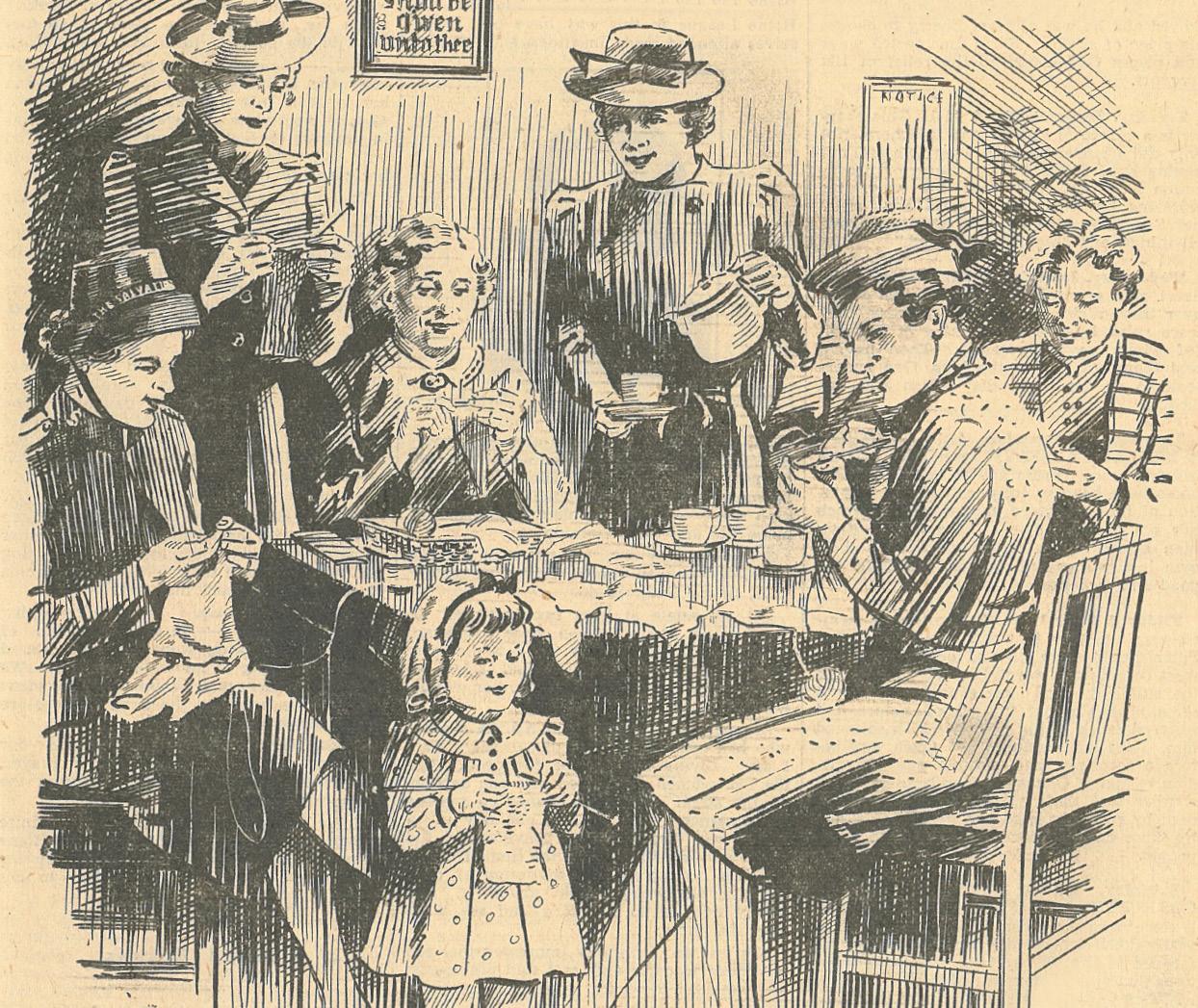
3 minute read
Keep Them Warm!
In May 1943, the middle of the Second World War, The War Cry published a knitting pattern for woollen mittens, with the directive: ‘Knit for the troops—mittens to keep them warm’. Millions of women, men, children and even the British Royal Family knitted to support the wellbeing and warmth of Allied troops.
During war time, knitting morphed into a patriotic duty. Knitting needles became domestic weapons gladly and passionately employed in the fight against the enemy. Mittens, vests, scarves, balaclavas, helmet caps and more were knitted, collected and dispatched. Knitters wrote notes of encouragement to stuff into socks and hats to encourage the troops. Trench foot was rampant, so dry socks were especially imperative to guard against amputation from infection.
From 1940 to 1945, The War Cry records ample evidence of a diligent contingent of relentless Salvationist knitters—primarily home league women—committed to doing their part for the troops overseas. The initial article had detailed instructions: ‘Use any service colour, 3oz of double-knit wool, 4 needles # 11.’
On 15 July 1944, The War Cry highlighted the efforts of a home league member from Palmerston North Corps: ‘Mrs Baker (senior) has knitted the following articles for soldiers overseas—131 scarves, 60 pairs of mittens, 11 Cranwell flying jerseys, and six skull caps. This is a splendid achievement.’
War relief work undertaken by New Zealand home leagues included responding to a plea from Mrs General Carpenter to collect or make clothing for those in dire need. In just a five-month period, 1860 garments were forwarded to London, with War Cry reporting in December 1940 that ‘many of these are new and beautifully made and will doubtless give great joy and comfort to the recipients.’
The War Cry added a list of home leagues that had not only made ‘a wonderful contribution’ but also ‘pledged themselves to continue this service cover illustration from The during (home league) recess’. Home leagues from Waipukurau, Invercargill, Geraldine, Karori, Tauranga, Eltham, Te Awamutu, Wanganui East, Te Aroha (Māori Home League), Sydenham, Ashburton, Kilbirnie and Onehunga were key contributors.
Towards the end of the war, The War Cry published an article dated 6 January 1945 titled: ‘Overseas Distress: Bundles for Britain and Garments for Greece’, where the writer issued an impassioned plea to Salvationist knitters. ‘The need is great. The interest of New Zealanders will not abate … we will all lend a helping hand. Packing for this worthy object is still in progress. If you so desire, send your contribution. It will be more than welcome, and your gift will free someone from the extremes of cold.’
The article continues, ‘Be it from an individual or a nation the cry for help can never reach a New Zealander without there being some response … People all over the Dominion are interested, and contributors are of all ages, including a grand old lady of 92 years. Another lady of 90 years knitted a frock and pantees for a child.’
When the soldiers started returning from the war, learning to knit was considered a form of physical and mental therapy for soldiers who had horrific injuries. Its rhythmic repetition was believed to help bring about calm, as complicated patterns requiring concentration distracted the mind from reliving atrocities.
Sources: Salvation Army Archives and thelittlewoolcompany.com










